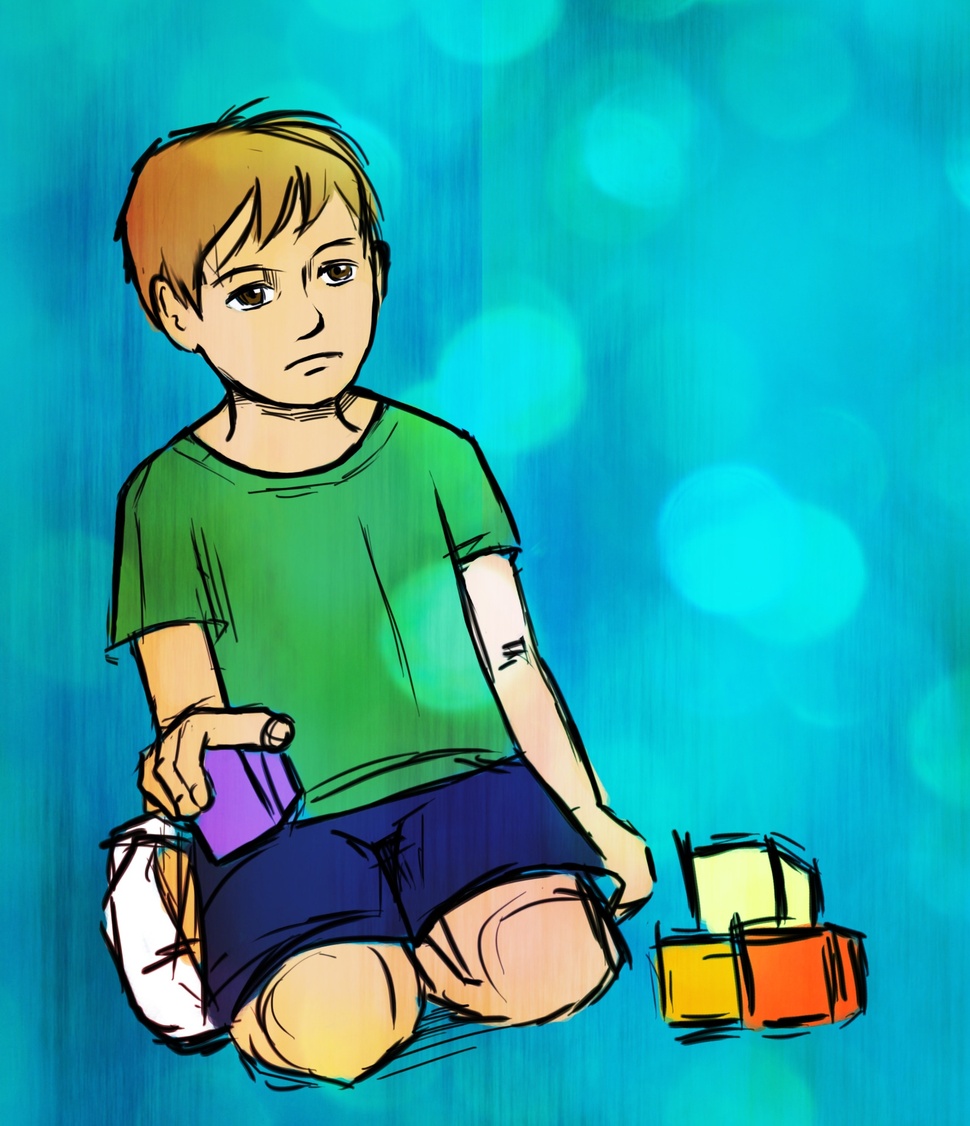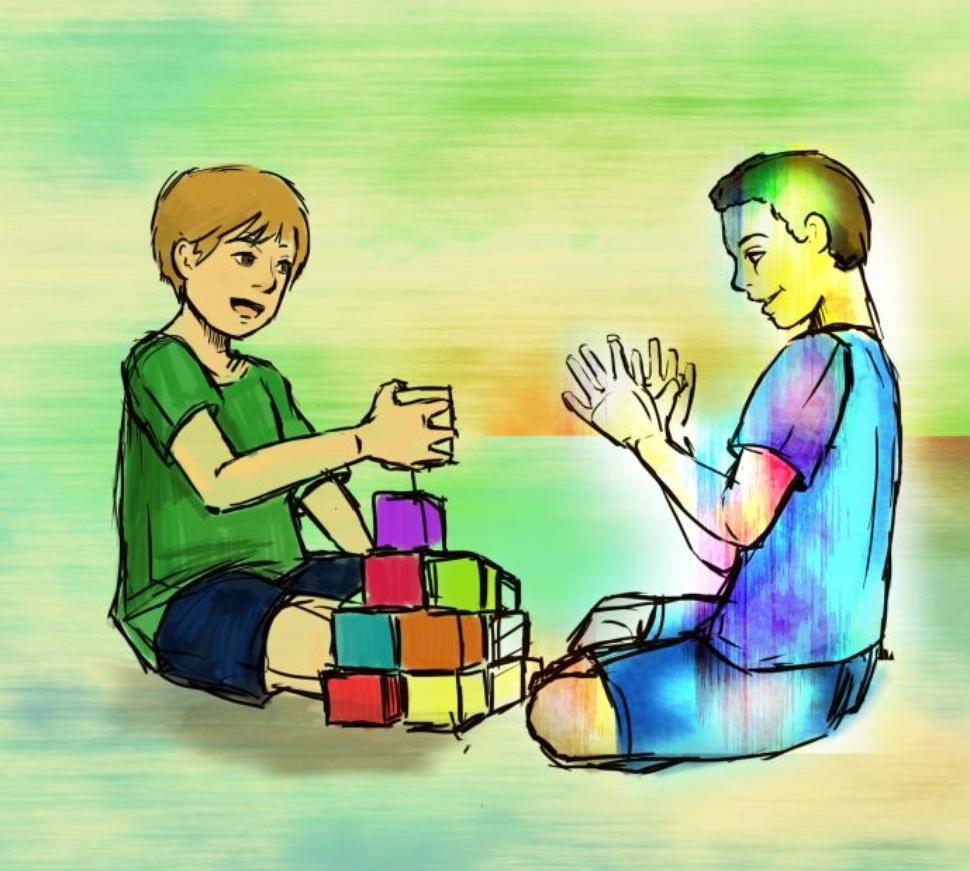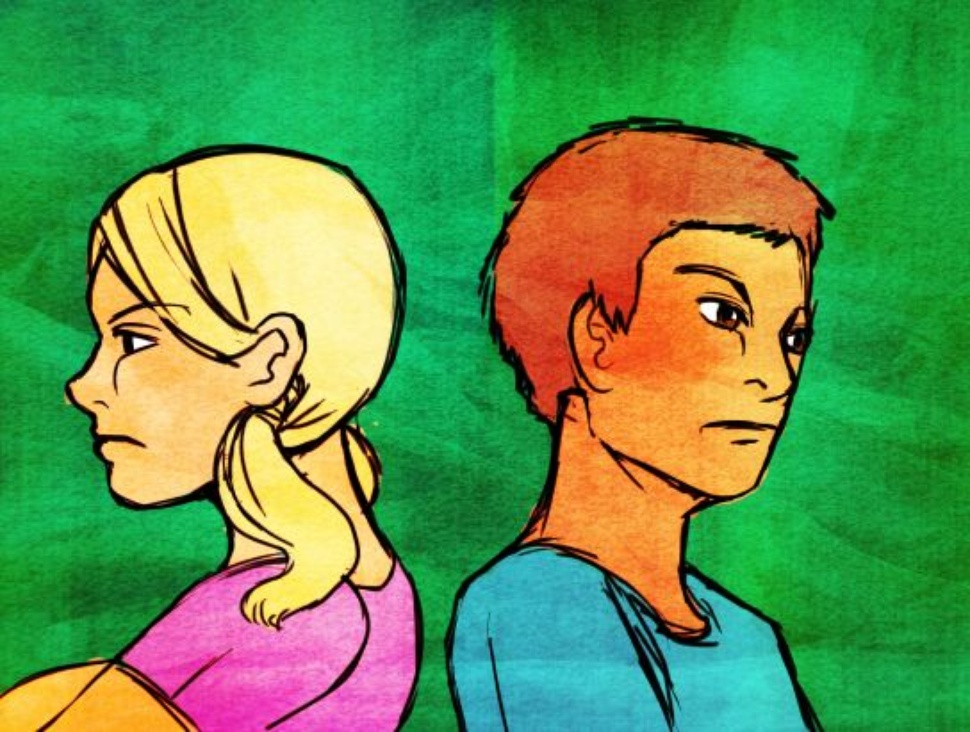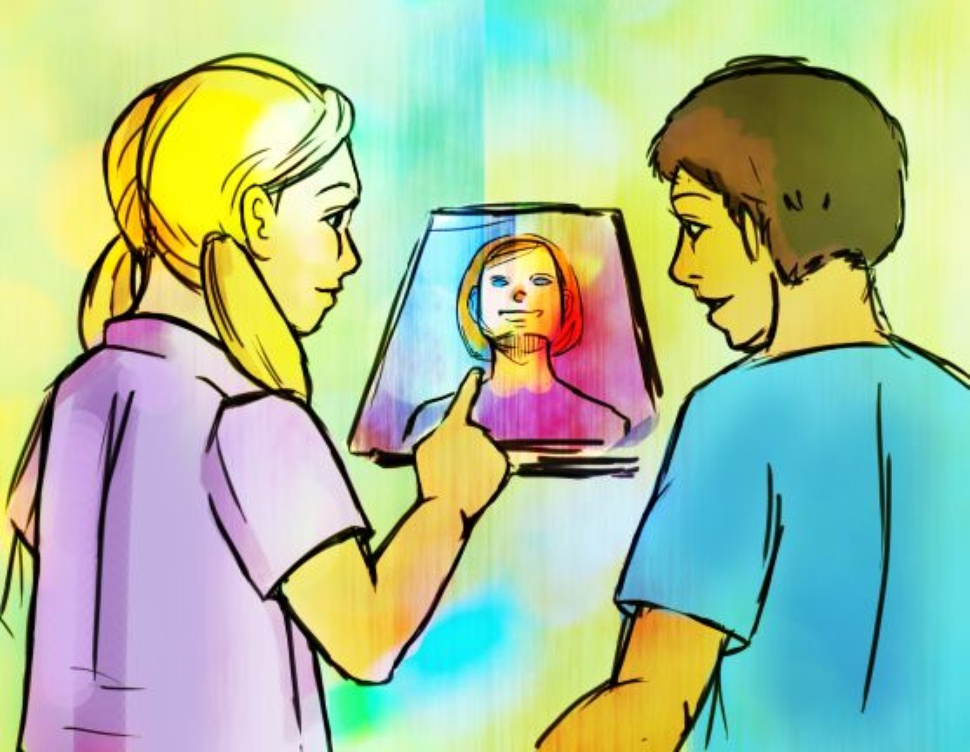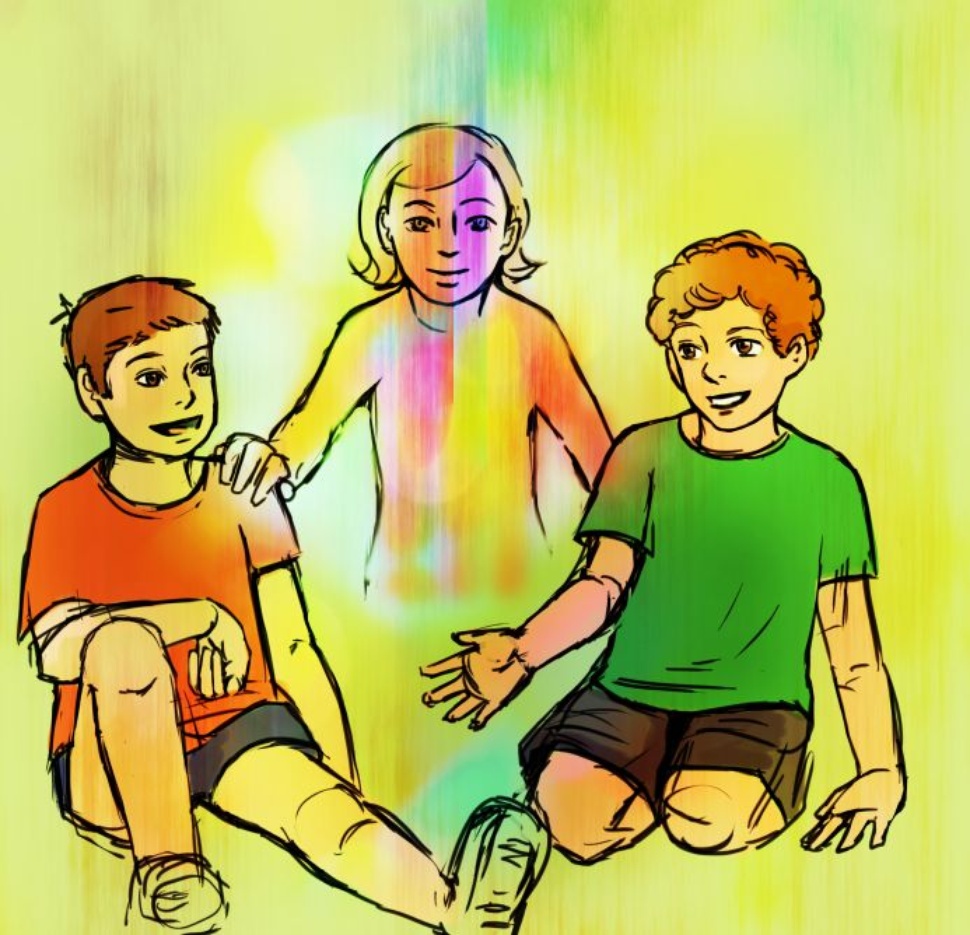Weekly Blogposts
Week 6: Dave's User Study Begins!
Sunday:
Justine sent me feedback for the Solve for X idea sketches on Friday. I had thought my images would be used to illustrate certain points of the powerpoint; so it should come as no surprise when Justine commented that my sketches were a little tame. We were actually going for a more futuristic feel - in the future, after all, agents would surely be able to manifest as holograms or on portable devices like Google Glass. Justine also mentioned a certain fantasy novel (the name escapes me at the moment and I'm having difficulty locating the relevant email). I have not read this book, but Justine described the main character's best friend and companion, who was a book. She suggested that this book might serve as an inspiration for the images we were trying to create. I may have been a little too inspired. My second batch of idea sketches was very much inspired by sci-fi novels and movies I'd watch. I drew holographic agents accompanying people to outer space, agents acting the part of characters from novels - in general, agents taking over the role of "best friend" in everyday life. I had an inkling my ideas might be a bit too fantastical, but I figured it would be better to tone down ideas than need to tone them "up." At any rate, I sent all of my new idea sketches to Justine and waited for additional feedback. Since Justine's very busy, she wasn't able to respond until Sunday evening. As expected, my ideas were not quite what she was looking for. Instead, Justine described exactly what she wanted. In total, she wanted six images that would depict the following:
1. A single kid interacting with a portable agent (e.g. Google Glass, iPad)
2. A single kid interacting with a non-portable agent (e.g. wall projection or holograph)
3. Two kids interacting with a portable agent
4. Two kids interacting with a non-portable agent
5. Two adults interacting with a portable agent
6. Two adults interacting with a non-portable agent
Justine's request makes sense; actually, the logic behind them reminds me of the thinking that drives experiment design. To really give the audience an idea of what agents can do, we'd want to show all the different scenarios in which people can interact with an agent. Thus, it's necessary to have images depicting both one-on-one interaction as well as group interaction. In addition, we want to show the different ways agents can manifest - thus, we need to show both portable and non-portable agents. My only concern was time. When Justine emailed me, it was around 3 in the afternoon (although I didn't see the email until 4) and the images needed to be done by Monday. Although Justine would later tell me that the Monday deadline was around 10 PM, I was initially under the assumption that the images should be done by Monday morning, which gave me around 8 hours. I wanted very badly to make images that would look good for Justine's talk, but I didn't know if I'd be able to given the time constraints. My art is obnoxiously fickle - some days, drawing comes easy, and other days everything I draw looks wrong. At any rate, I was determined to try my best. The first image I drew was, in hindsight, a little...ugh. The problem was that I didn't have a good idea of what style I wanted for the images - I only had a vague idea that the images should be light, cheery, and not too realistic. I must have been subconciously influenced by the anime I'd watched on Saturday, because my the people in my images looked rather wide-eyed and stiff. My following attempts were a lot better, mostly because I realized during the sketching process that the sketches themselves looked a lot more fluid and expressive than the final products. Ultimately, I decided on a looser, semi-realistic style that retained a lot of the initial lines from sketching. Getting the images to have just the right style took a long time. By 12:30 I'd only finished two and a half drawings, although I had two or three sketches that were ready for coloring. Since I was too tired to really continue (my sketches were beginning to look increasingly deformed), I decided to go to bed and continue in the morning.
Monday:
I woke up at 6 AM the next day to finish the images. I usually leave for work around 8:15 AM. By that time on Monday, I was able to finish another drawing and complete another sketch. I proceeded to spend the rest of the morning working on the images in the lab. At some point, however, I received another email from Justine. She thought it'd also be nice to have "before" images. That is, our current set of images showed agents facilitating happy interactions between humans (or else showed agents themselves happily interacting with humans). But what were the "before" scenarios: that is, what were the (presumably less content) states of the individuals before the agents stepped in?
I definitely agreed that "before" images would add impact to the images we already had. But again, I was a little worried about my ability to produce all of them on time. Maybe I stress too much over little things, but I wanted to make sure I produced high quality images for Justine's talk. And dropping the ball was, of course, entirely out of the question. When I told Dave, he was gracious enough to let me spend the rest of the day working on Justine's pictures - a task which I did complete eventually around 8:30 PM that night (with breaks of course).
What can I say about the finished images? Looking back on them now, I do wish I had a little bit more time to make the style more consistent among them. Some of the people in the "before" pictures don't really resemble themselves in the "after" pictures. In addition, I used a lot of textures to give the pictures extra "oomph" (since the backgrounds were plain otherwise). It's a kind of cheap way of adding noise to an image, making it look more intricate than it actually is. Given more time, I might have remedied this problem by drawing in a few backgrounds myself. However, at the end of the day I'm more-or-less satisfied with the images. What's important is that Justine likes them and finds them helpful for the presentation - which I certainly hope is the case! I've included the finished images below.
What's more, working on these images has allowed me, I think, to understand the work of most freelance designers/artists. After all, one could think of these images as a pseudo art-commission. Although I've whined quite a bit here about being overly stressed when it comes to time deadlines, I'm sure that most artists deal with far tighter schedules. I'm glad to discover that I'm capable of producing artwork that isn't intended for my personal enjoyment or created at my own leisurely pace. Sure, there's the work I did at Animax, but even at Animax I always knew that another animator could take over my prop design if I couldn't go to work. Isn't it cool that my REU experience has turned out to not only be a research experience, but also an art experience?
(A side note: My favorite is the one with the green-tinted background that shows two kids fighting (one a a blonde girl, the other a race-ambiguous boy). It was the last image I drew and I like the way it turned out, particularly the line quality (which isn't as messy as in some pictures, but also maintains a degree of details) and the faces.)
Plan for tomorrow: working on Dave's website, maybe more work on the model!
Tuesday:
I spent Tuesday morning setting up the website Dave wanted. I realize now that I haven't really explained what this website is, so I'll do that here. I've mentioned Dave's participant recruitment form, currently available as a Google Form. I believe I've also mentioned that Dave wants participants to have an option of "sharing" the form with their friends (so that we can recruit more kids). However, it's not possible to embed HTML in the Google forms, so if we want the "sharing" option, we'll need to have an external website that hosts the Google form. Since I've been learning HTML, CSS, and PHP in my spare time, Dave thought this would be an appropriate task for me.
Thus far, most of my experimentation with HTML and CSS has been off-line. That is, I'll open up a blank text file, save it with a .htm extension, mess around with HTML code, and then preview it in Chrome. Accordingly, the first thing I did this morning was figure out how to publish sites online. This was fairly straightforward: I just downloaded Filezilla (which I've used before in my Digital Cities class this past semester) and transferred all my HTML and CSS files.
The second thing I did was find code for the "sharing" option. Last Friday, I discovered the site AddThis, which allows you to add a Facebook/Twitter/Email sharing bar on your website. Using AddThis, it was incredibly easy to create a share bar on the test page I'd set up. It was also very easy to embed a Google form in HTML. Again, I hadn't expected everything to be this straightforward - last Friday, I'd been under the assumption that I'd have to write some code myself. And although it appears I won't need to, I am curious how the AddThis code works. The code they give to users is only a few lines long. Most of the actual code is apparently contained in a JavaScript, which the HTML code retrieves/calls on. I'm curious how the actual code works (how, for instance, it requests login information from the user), but I'd need to see the JavaScript to figure that out. :/ Sigh.
Anyhow, I was excited that I got the test page to work. It's available here. Unfortunately, the link will probably only work for a short while; Dave informed me later on that morning that we actually would not be needing the "share" option, which is the only reason we had a webpage in the first place. That's fine with me - at least I know now how to incorporate a share bar into my own website, should I ever publish something myself.
After that, I got back to working on the models, which if you remember from my previous posts will need to be altered to fit a less realistic style. Maybe I need to clarify this point too. The continuum that I showed last week showed several models of varying realism. However, all of those models except the very realistic one were rough molds - they mostly only look good from one angle because that was all I needed for a continuum image. Now, I'll have to go back and refine the Style 2 mold. With luck, modifications won't take too long - I'd like to get started on rigging and animation eventually!
The other thing that's been on my mind is the Alex-in-Unity project that I haven't yet finished. I don't think I completely understand the circumstances under which I was recruited for the ArticuLab, but I know Alex-in-Unity is one project I'm definitely supposed to help with. However, given the developments of the past few weeks, I haven't had any time to spend working out the kinks in the project. Of course, Anders has been on vacation, too, so it's probably OK that I've dedicated the last two weeks to other projects. Eventually, however, I'll need to go back to working on Alex-in-Unity - as a person with a single-track mind, it's just a tad confusing trying to balance all of these tasks. I plan on wrapping up my modeling work (including re-topologizing but not animating) and then going from there.
I've included a screenshot of the webpage (see below).
Wednesday:
On Wednesday, I mostly worked to refine my models - with the hopes that they would be the final iteration before I started on rigging and animating. These final touches included fixing the girl model's shoes (they were a bit lopsided) and the hands of both models (still somewhat mangled looking). At last, I reached a point at which any changes I made to the models actually made them look worse than better. It was at this point that I decided to wait for the lab meeting (moved from Thursday, the 4th of July) to see how I should proceed.
In the meanwhile, I began writing a documentation of the modeling process. Although ZBrush has been gaining popularity in recent years, especially in the gaming industry, I'm not sure if CMU-hired artists would be familiar with it. It seems to me that most artists hired by the ArticuLab are probably people with both technical and artistic skills, who are maybe CMU-affiliated or trying to apply to CMU's Entertainment Art industry. That is, they probably have to stretch their skills over a wider range of topics (both the technical and the artistic) and thus can only dedicate themselves to the most universally used modeling programs like Maya. In that case, anybody who adopts the Peer Tutoring project after me will need to (or at least they should) know how I developed the models, in case they need to go back into ZBrush to make changes.
In my documentation, then, I've not only described the general process by which I created the models, but have also given tips on how to change aspects of the model (the texture, for instance, or materials). I'm not done with the documentation, but I will try my best to give a thorough description. Having worked with Alex, I know how frustrating it can be working with someone else's files, not knowing exactly what they did before you came. Of course, in the best case scenario, I would finish all the modeling work and start on some of the basic animations - anyone coming in after me should only need to worry about animating a ready model in Maya. But it's always good to prepare for the worse-case scenario in which I am not able to finish the models by the end of the 10 weeks and some one else may need to pick up the modeling work after me. I think ZBrush is pretty intuitive compared to Maya, so using it for touchup work would not be exceedingly difficult.
Around 2 PM, we held our usual weekly lab meeting. During this meeting, Justine told me that the model looked "compelling" and was finally in the right style; now, we had to test it. As such, my next task is to write up a series of questions that we can ask middle school/early high-school students. These questions will be used to gauge how effective our model will be as a peer tutor. Dave and I will present these questions to Justine next Tuesday at 2:45 PM. If they are approved, we can schedule them into Dave's user studies.
Thursday:
Thursday was July 4th, which was supposed to be a day off. However, I’d be going to Philadelphia on Friday (a regular work day), so I made up for my Friday hours by working on Thursday. I worked mostly on refining the survey questions regarding the models. In addition, I organized all the art files so that they could be transferred onto the ArticuLab server.
Friday:
I went to visit Tiffany in Philly on Friday - no blogpost!
